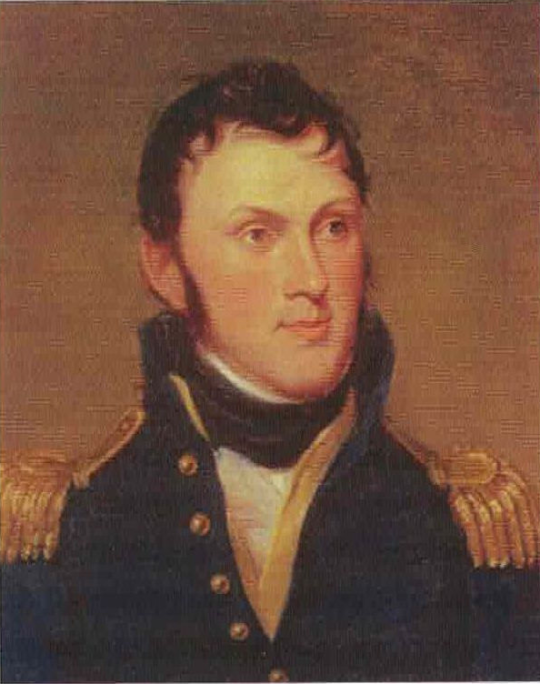
Stephen Harriman Long, early American explorer of present-day Oklahoma.
Stephen Long Explores Oklahoma Region
Neither cold nor heat, drought nor flood, dangerous Indians nor hostile Spaniards could stem the surge of American merchants, scientists, adventurers, missionaries, and soldiers who persevered across the rivers, then the lands of present-day Oklahoma. While the imperial powers of Europe drained each other’s blood and treasure, or sank into non-productive lassitude, the young American nation born of them vibrated with energy and ambition. Indeed, many people would have many ideas for Indian Territory.
Scores of daring American entrepreneurs yearned to reach the bountiful trading hub of Santa Fe to the west of Texas, but well-armed Spanish troops under orders from their distant government prevented that, at the point of the bayonet when necessary. It was no place for the faint of heart or the uncertain of aim. Many of the keenest observations and most notable discoveries by Americans were accomplished by private citizens such as scientists or merchants, rather than those in government service.
One of the most intrepid American explorers of early Oklahoma, though, was U.S. Army Engineer Stephen Long. As the Osage-Cherokee war raged in 1817, the War Department commissioned him to choose a location on the Arkansas River for a fort to help calm that vicious feud, as well as to protect the American settlers beginning to enter the area. Long established Fort Smith, later one of the largest cities in Arkansas.
Then, encouraged by the Adams-Onis Treaty signed between the United States and Spain, a series of important American explorations trekked through present-day Oklahoma in the late 1810s and early 1820s. Natural and manmade dangers alike lurked in every direction throughout the rough country.
Long’s Epic Journey Two years after his first Oklahoma adventure, esteeming his toughness and coolness of mind in dangerous situations, the War Department sent Long west on an even more daunting mission: finding the elusive headwaters of the Arkansas and Red Rivers. Numerous previous American expeditions had failed to do so. Also plagued throughout the expedition by supply shortages due to the financial Panic of 1819, Long trekked across the Great Plains to the Rocky Mountains, then in the summer of 1820 detached Captain John H. Bell and a dozen men to follow the Arkansas back to Fort Smith.
This group, which included the father of American zoology, Thomas Say, faced its own desperate odyssey, braving thirst and scorching heat before reaching their destination. Say suffered additional heartache as deserting soldiers stole five journals in which he had painstakingly compiled vast amounts of eyewitness data about newly christened Indian Territory’s people, plants, animals, geography, and minerals. Forging on from memory and the remnants of his expedition writings, he managed to publish a book chronicling the Bell expedition.
Stephen Long’s great 1820 expedition through present-day Oklahoma continued his preceding year’s exploration of the Missouri River. The remarkable pathfinder seemed to find a way to answer every one of the many formidable challenges that arose with ingenuity and resourcefulness.
|
Read the entire Oklahoma story in John J. Dwyer's The Oklahomans: The Story of Oklahoma and Its People volume 1 of a 2-part series on the 46th state and the people who make this state very special. |

|







 RSS Feed
RSS Feed
